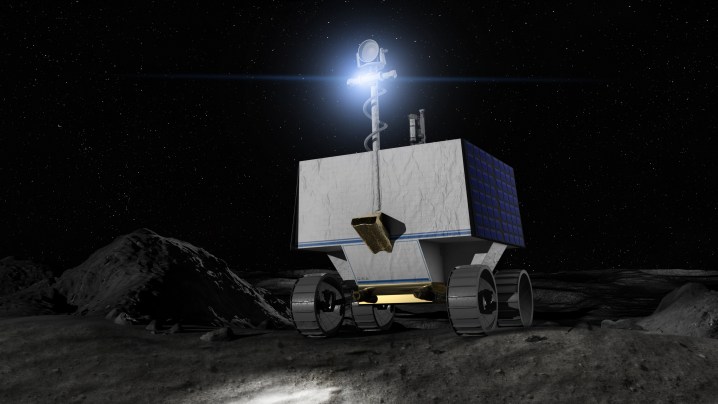
NASA likes to bring its missions closer to space fans around the world — especially to the younger generation to get them interested in science subjects — and part of these efforts involves the chance for people to fly their names on spacecraft heading off to explore parts of our solar system.
The next opportunity to submit your name for inclusion on a NASA rocket flight is the VIPER mission, which features the space agency’s first-ever robotic moon rover.
VIPER (Volatiles Investigating Polar Exploration Rover) will launch later this year and is set to explore the lunar South Pole, a region that includes some permanently shadowed areas that are of great interest to scientists who are searching for the presence of water ice. This important resource could eventually be harvested to sustain human exploration on the moon and also Mars, and even be processed to create fuel to power rocket launches from our nearest neighbor.
NASA’s VIPER robot will be the first rover to measure the location and concentration of water ice and other resources, so it’s findings could potentially be a game changer for the way we prepare for and conduct long-duration missions in space.
To fly your name to the moon, simply head to NASA’s special webpage and enter your name and a PIN code that will enable to access your boarding pass closer to the launch of the VIPER mission, which is currently scheduled for November 2024. So far more than 13,000 people have signed up to send their name to the moon.
The VIPER mission is expected to last 100 days, during which time the robotic rover will travel several miles over crater rims and into permanently shadowed craters, sampling different kinds of lunar soils and environments as it goes.
“VIPER represents the first resource mapping mission on another celestial body and will deepen our understanding of how frozen water and other volatiles are distributed on the moon, their cosmic origin, and what has kept them preserved in the lunar soil for billions of years,” NASA says on its website.
NASA had hoped to launch VIPER in November 2023 but delayed it by a year to carry out additional ground testing of Astrobotic’s Griffin lunar lander that will deliver the rover to the lunar surface.
Editors' Recommendations
- China confirms target date for landing taikonauts on the moon
- These 3 companies are developing NASA’s new moon vehicle
- Meet NASA’s trio of mini moon rovers set to launch next year
- With Intuitive Machines’ mission cut short, when is the next lunar landing?
- Odysseus shares new moon images ahead of imminent landing attempt


